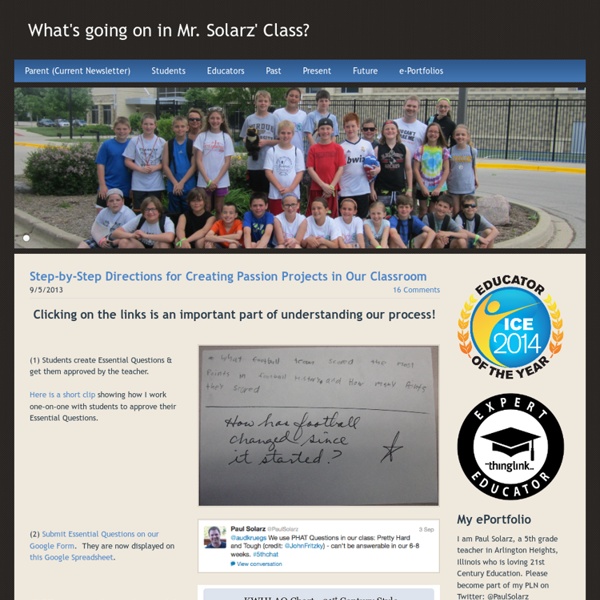



6 Principles Of Genius Hour In The Classroom Genius Hour In The Classroom: 6 Principles Of Genius Hour by Terry Heick Update: We did a t-shirt campaign of this graphic last year and it sold decently (if 13 t-shirts can be considered ‘decent.’). Genius Hour in the classroom is an approach to learning built around student curiosity, self-directed learning, and passion-based work. In traditional learning, teachers map out academic standards, and plan units and lessons based around those standards. Genius Hour is most notably associated with Google, where employees are able to spend up to 20% of their time working on projects they’re interested in and passionate about. What’s The Difference? Genius Hour provides students freedom to design their own learning during a set period of time during school. Sense of Purpose Students must find their own sense of purpose in what they study, make sense of, and create. Design Inquiry & Navigation Create Whether students “make,” publish, design, act, or do, “creating” is core to Genius Hour. 80/20 Rule
Why I Abandoned Genius Hour Genius hour is an amazing concept that children respond to because they get to learn about any topic they choose. I had a few rounds of Genius Hour last year and the kids thought it was awesome. On Fridays, the question was always, "Are we doing Genius Hour today?" With a grade 1/2 classroom last year, it got difficult to keep up with Genius Hour for a few reasons. 1. 2. 3. These were all minor issues, my major issue was that my students did not know how to properly research and I as their teacher did not effectively model this. I needed a better plan, I needed to be better prepared and I needed my students to have the skills needed to research an idea or topic, produce not only a product but also be able to share the information they learned from researching the topic. This year, Genius Hour turned into Wonder Workshop. This year I began the year teaching the skills needed for an inquiry based classroom. My students learned different ways to show their learning.
Introducing Genius Hour (Passion Based Inquiry Projects) October 3rd was our last #geniushour chat (click here to learn more about Genius Hour) on twitter. We had a fantastic conversation and some great ideas were shared. Since that chat (click here to see all archived chats), I have had a few more people ask me about how to introduce Genius Hour. So I thought I would compile a list of all the wonderful strategies that were discussed. Here it goes… Danielle Porte tweeted about doing a guided Genius Hour to start her class off this year. This year, Hugh and I introduced Genius Hour together. I am sure there are many more ideas out there from other great teachers about how to introduce Genius Hour. How do you get students ready for Genius Hour/Inquiry Projects? Like this: Like Loading... About Gallit Zvi Teacher for SD36, Grad student at SFU, love learning, #geniushour chat co-moderator (see geniushour.wikispaces.com for details) I blog at gallitzvi.com I tweet from @gallit_z